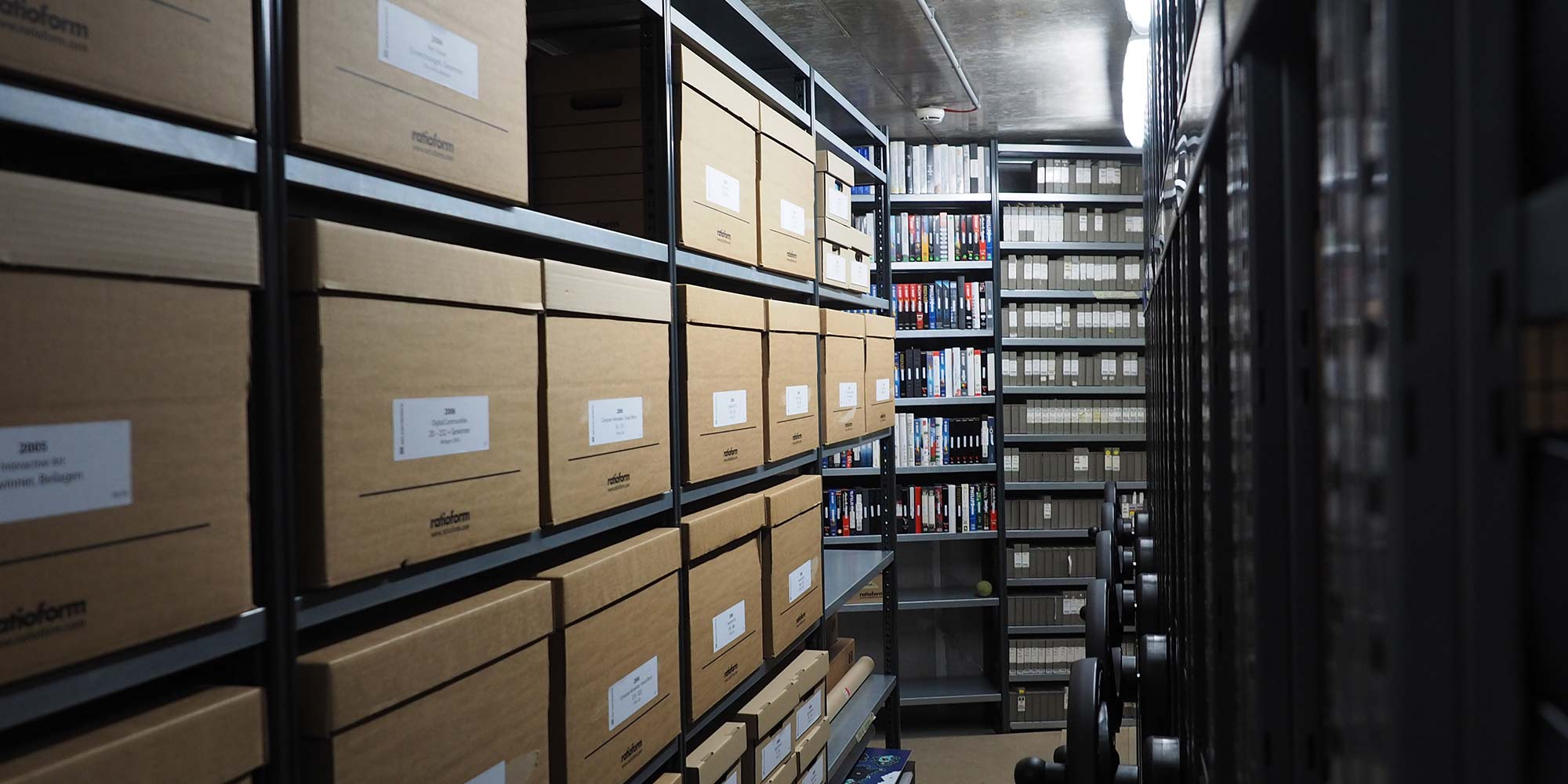A Profile of Media and Digital Arts since 1979
Ars Electronica’s archive contains a diverse assemblage of artistic works and documentation of projects, exhibitions and activities over a timeframe of more than four decades in the wide-ranging international field of media art.


Due to the ongoing events of Ars Electronica the archive grows continuously. Therefore it offers not only a representative cross-section of the broad field of media & digital art; it is also a historical catalog of the data storage media and formats that in many cases significantly determine the appearance of the works preserved on them.
Scholarly articles on computer graphics, computer animation, computer & digital music, interactive art, netbased art, software, virtual reality applications, media performance, bio art and robotics explicitly document the aesthetic strategies used in these fields as well as, implicitly, the technical conditions on which they are based.
However, the Ars Electronica Archive is not only of interest from a scholarly-historical perspective, but it also represents an urgent task in view of the brief “half-life” of the data storage media it contains. The video collection includes a multiplicity of formats, the availability ofwhich is progressively diminishing amidst the ongoing proliferation of technological alternatives. The same applies to the programming languages in which art projects are developed and their various storage media—from diskettes to CDs, to websites and their addresses.


Preservation and Documentation
Beside thousands of video- and audio recordings, numerous photographs, negatives, and slides are stored in the archive, as well as an extensive collection of print material including publications, posters, folders, and press material. With the reopening of Ars Electronica in January 2009, the archive had for the first time a climate-controlled room at its disposal, where approximately 60.000 physical records are located in more than 378 meters of shelf space.
Since the beginning of the festival in 1979, there is a very large inventory of video documentaries. Thanks to the involvement of the ORF — Austrian Broadcasting Company’s Upper Austria Regional Studio, much of the program staged in the early years was recorded and professionally archived, which established the basis for the tremendous number of media documents to come. In addition, the festival and the exhibits in the museum have been repeatedly documented by video. Over 1000 hours of video footage of them have already been digitized.
The broad substantive spectrum of the content is matched by its tremendous diversity of physical and digital formats, which constitutes a substantial challenge for the archivist. Whereas there are proven methods for conserving physical objects, long-term archiving of digital data still raises countless issues.


Digitization and a Living Archive
During the construction of the new Ars Electronica Center 2008, the most comprehensive digitization and archiving project of Ars Electronica since the 1990s has been launched to specifically and centrally inventory and digitize material. The archive of the Ars Electronica has been reconfigured and developed both digitally and physically.
A server-based digital archive has been developed which is based on a complex database structure and metadata associated with digital objects (video, audio, image, text). At this stage it already includes over 210.000 entries with a storage volume of 68 terabytes. The database and all shared and created files are automatically transferred to a backup system and tested.
An additional tape backup of the archive holdings guarantees the sustainable protection. Ongoing efforts in this area are essential to achieve a future strategy for long-term archiving of digital data. The purpose of the Database is inventory and scholarly research, with the objective of reprocessing and agency’´s the history of Ars Electronica and digital / electronic Arts in general.
Where legally and technically possible, areas of the archive are made publicly accessible via an online archive, and artists and scientists are invited to engage with the content. Larger-scale project collaborations involving, for example, data visualization or data analysis of larger amounts of data are just as much a topic here as research requests concerning publications or research projects.


Projects and Articles
-

Ars Electronica Archive Relaunch
As part of the “Archive Relaunch Project”, Ars Electronica is modernizing its diverse digital archive in order to meet the challenges of archiving digital media art, comply with international standards and strengthen Austria’s contribution to Europe’s digital cultural heritage.
-
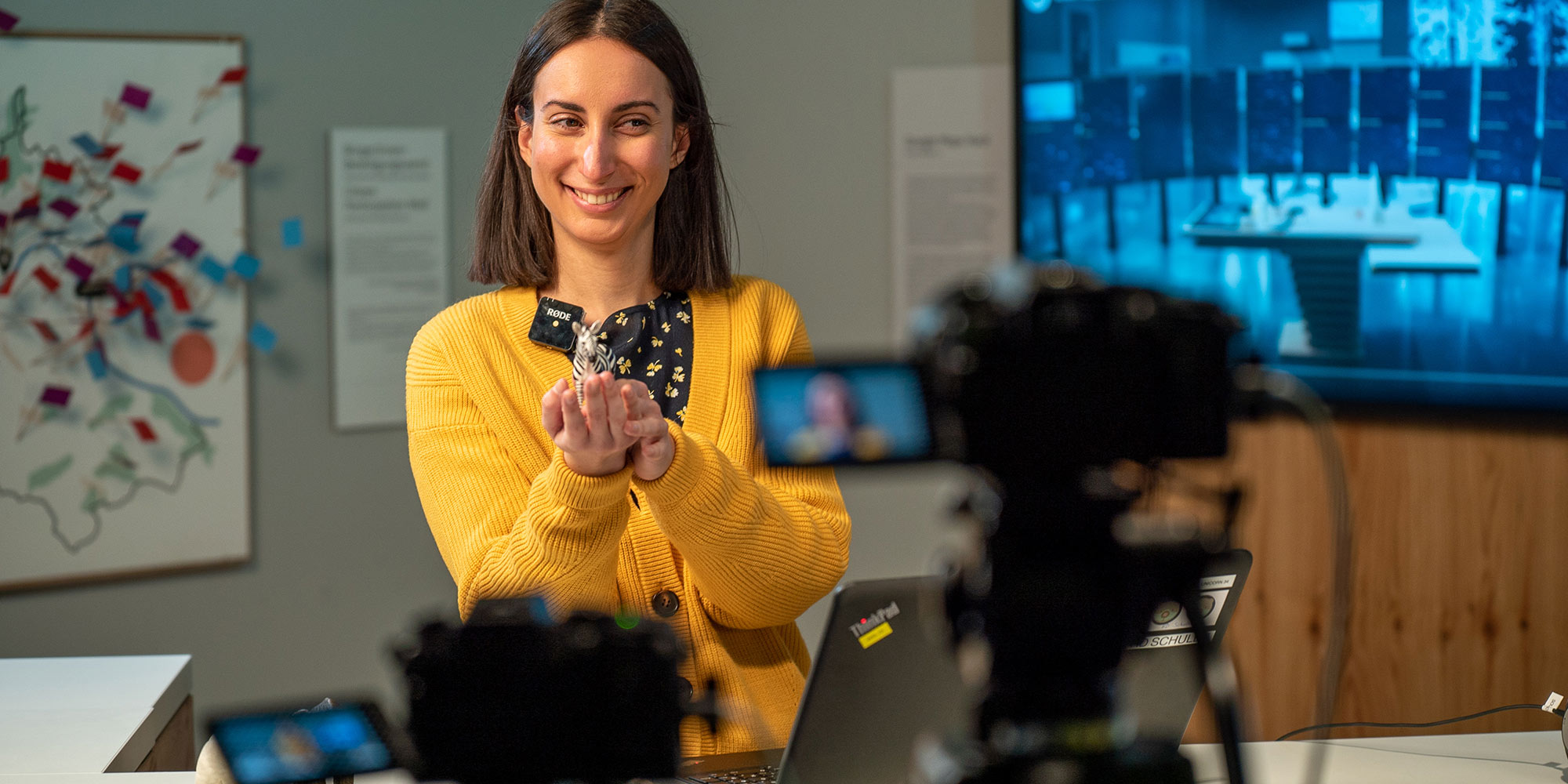
Ars Electronica Online Archive Upgrade 2023
The project was dedicated to the redesign and optimization of the Ars Electronica Online Archive. At the same time, the video series Home Delivery from 2020-2022 was edited, indexed and prepared for publication.
-

European ARTificial Intelligence Lab – Archive Showcase
The European ARTificial Intelligence Lab combined art, science and technology to critically reflect on AI; the AI Lab Showcase in the Ars Electronica Archive documents the activities and partners from 2018 to 2021.
-

Digital Art Histories
The funded project “Digital Art Histories” focused on the reappraisal and examination of the museum’s content in the period from 2009 to 2019 (including the “New Ars Electronica Center” in 2019).
-
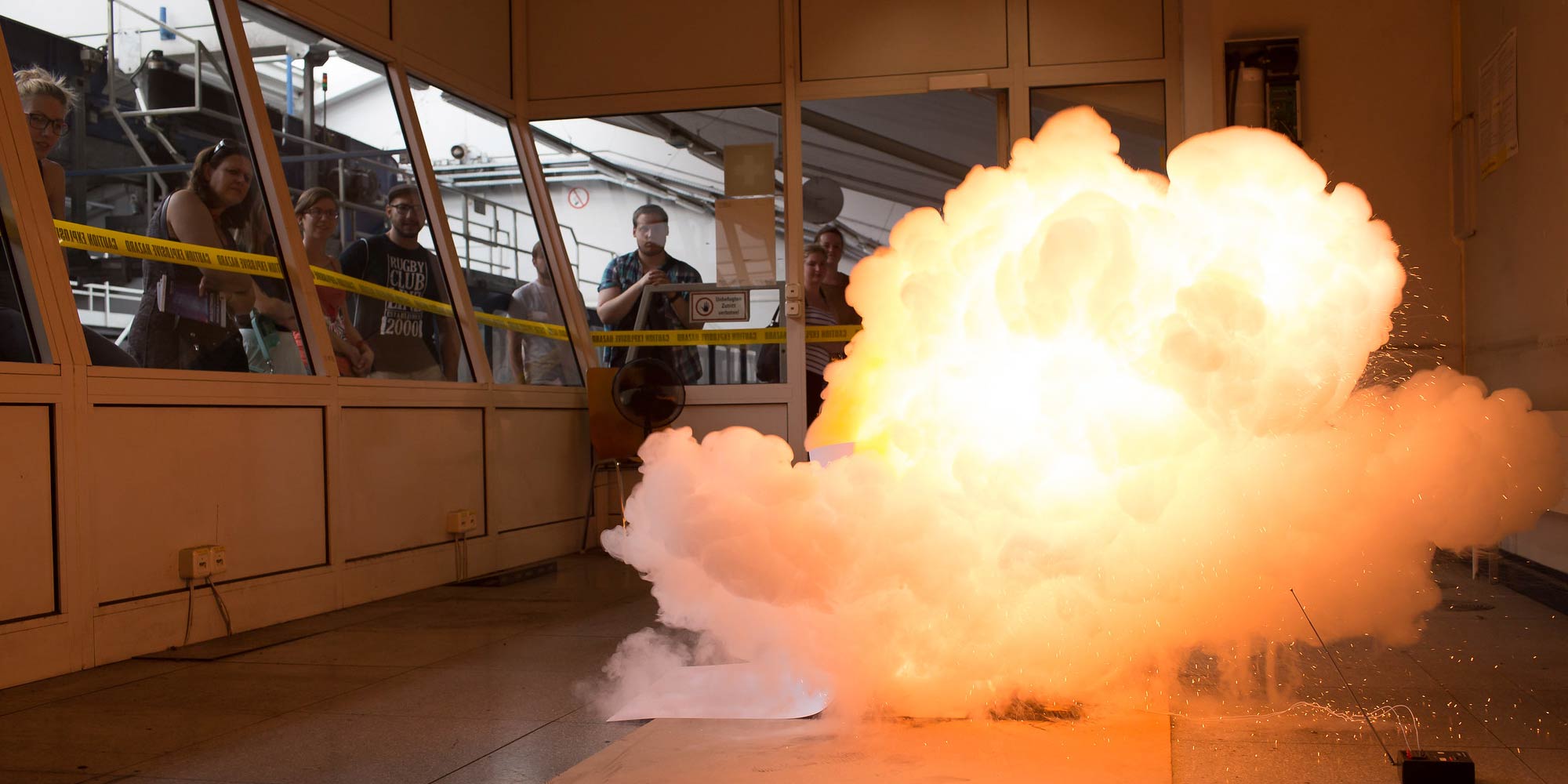
European Digital Art and Science Network – Archive Showcase
The basis of the “European Digital Art and Science Network“ is a big manifold network consisting of scientific mentoring institutions (ESA, CERN, ESO and Fraunhofer MEVIS), the Ars Electronica Futurelab and seven European cultural partners (Center for the promotion of…
-

Women in Media Arts
Women in Media Arts is a comprehensive database dedicated exclusively to women working in these genres. It includes all women who have made a mark on the 36-year history of Ars Electronica, and is designed to serve as an active…
-
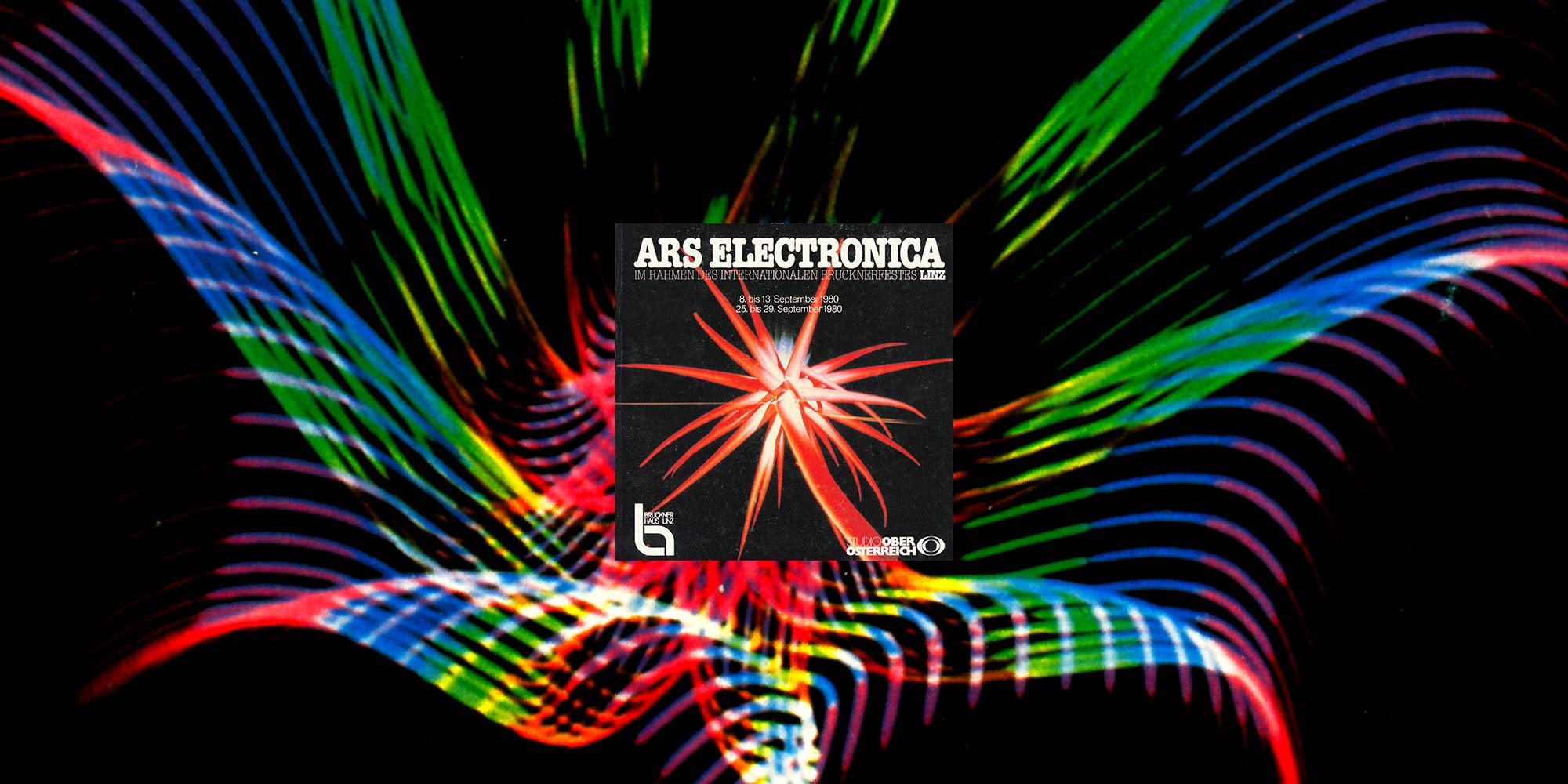
Fascinating Festival
The Ars Electronica Festival has been venue for innovative, experimental artists in the field of media art since 1979. Based on these artists and their projects the development and leadership role of the festival should be shown.
-
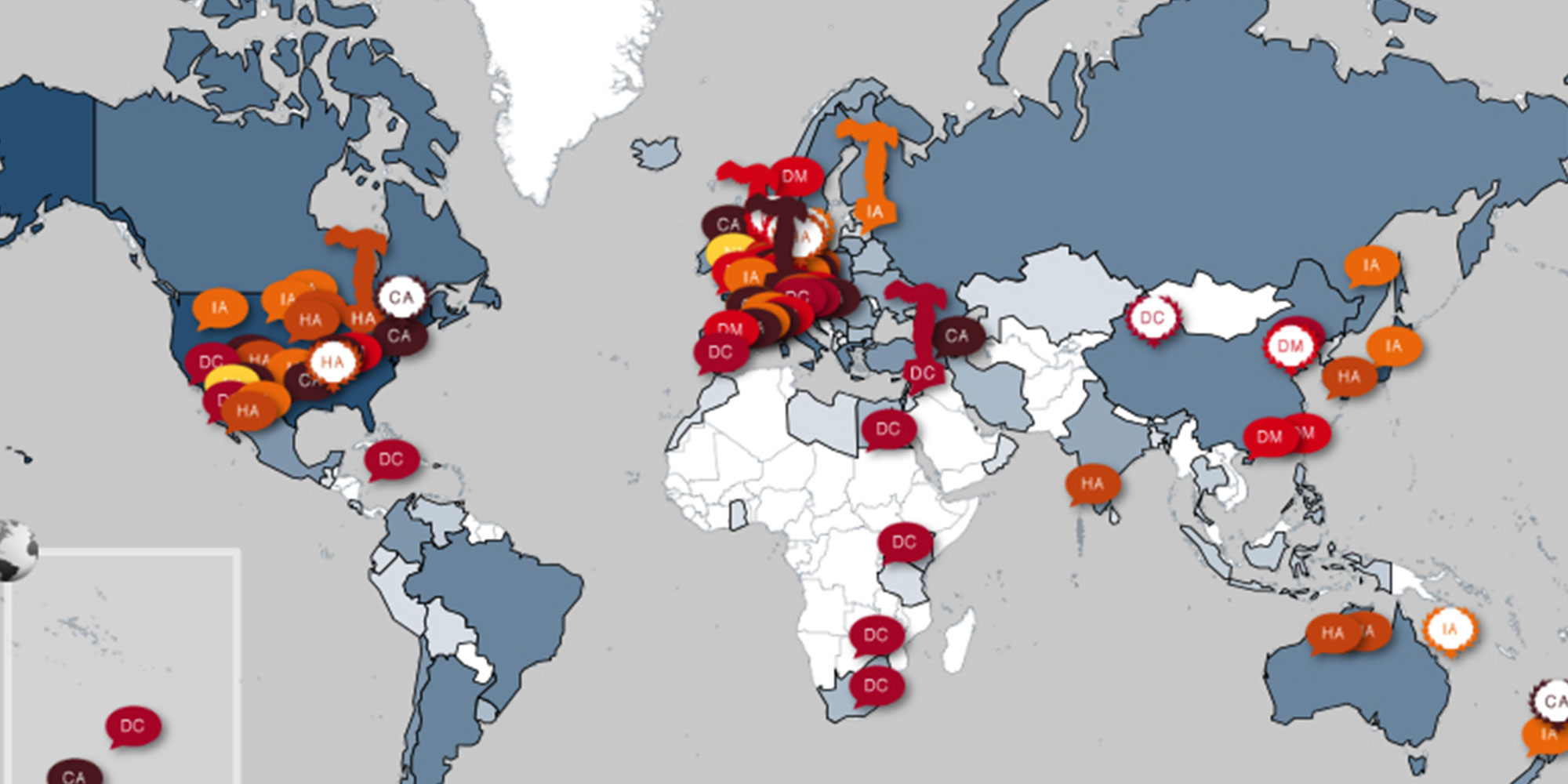
Prix Map presentation at the OK CyberArts
This years CyberArts Exhibition at the OK, curated by Christine Schöpf and Genoveva Rückert, also offered an overview of the Prix Ars Electronica and its history since the founding in 1987. The Ars Electronica Archiv assisted with research and footage!
-

Talks & Lectures
Since the year 1979 symposiums, lectures, discussions and presentations, with international guests from different fields such as media art, science, research, media theory and society, are important parts of the Ars Electronica Festivals.
-

Explore Ars — Das Ars Electronica Archive geht online!
The Ars Electronica Archive is going online with THE BIG PICTURE 2012 festival and is also opening its doors to festival visitors to mark the occasion. A multi-touch table allows visitors to enjoy browsing through the exciting festival history and…
-

Processing of the analog photographic inventory for the Prix
Main focus is the adequate storage of photographic and film material according to preservation standards, as well as the selective digitisation of the analogue photographic collection of the Prix Ars Electronica from 1987-1999.
-
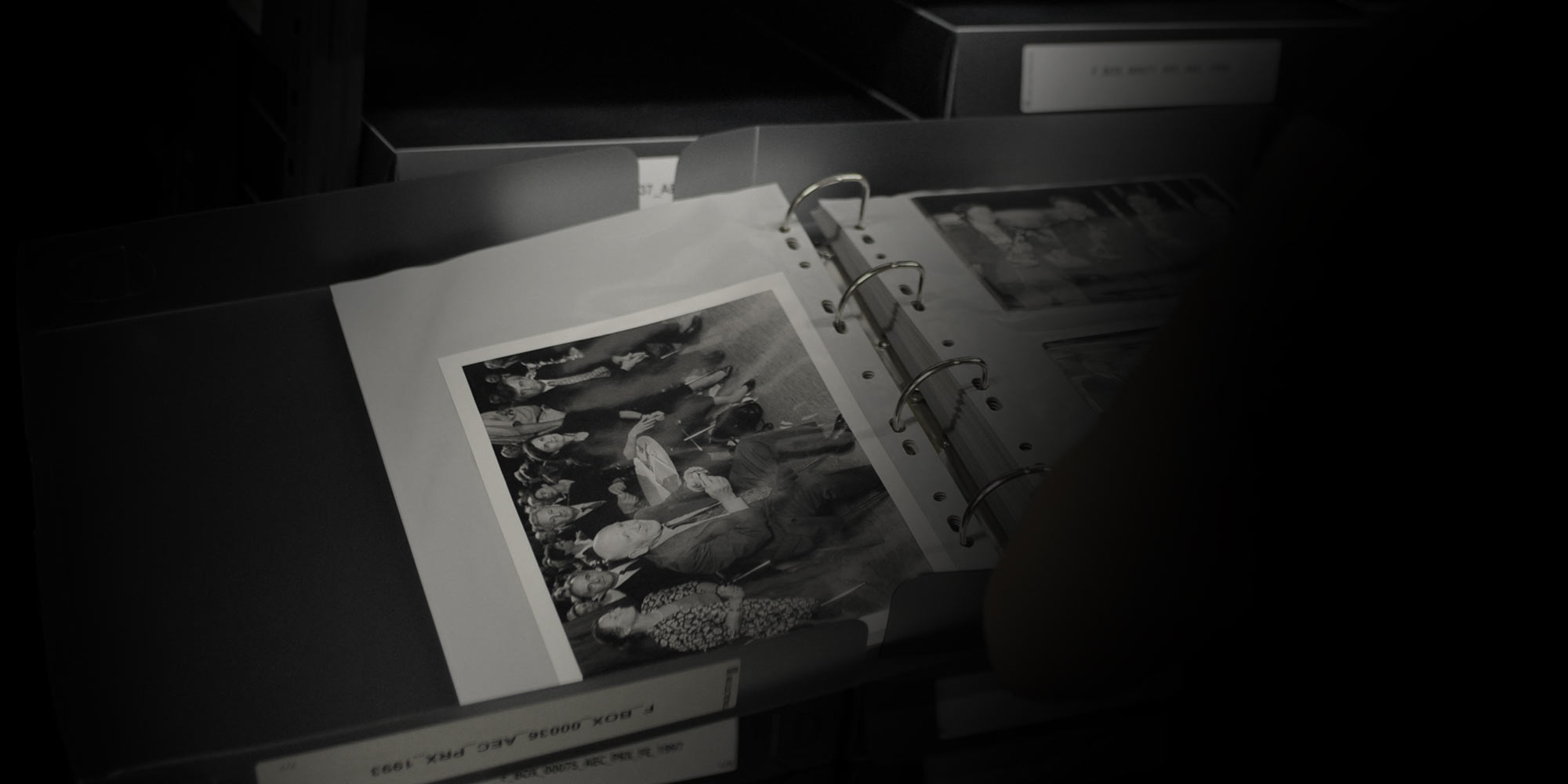
Conservation and inventory of analog photographic media
Researching and processing the cultural heritage of the early Ars Electronica years: photographic collection of LIVA (Linz event organisation) and ORF (Austrian Broadcast Station).
